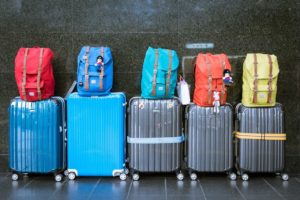 Today’s top story: How to afford your meds and support your health. Also in the news: A new episode of the Smart Money podcast on reducing child care costs, what the S&P bear market means for you, and why you might want to hold off traveling until September.
Today’s top story: How to afford your meds and support your health. Also in the news: A new episode of the Smart Money podcast on reducing child care costs, what the S&P bear market means for you, and why you might want to hold off traveling until September.
How to Afford Your Meds and Support Your Health
The cost of prescription drugs in the U.S. can be enough to make you sick.
Smart Money Podcast: Nerdy Deep Dive: How to Reduce Child Care Costs
This week’s episode is a Nerdy deep dive into the cost of child care.
What Does the S&P 500 Bear Market Mean for You?
As of market close Monday, June 13, the S&P 500 has officially entered a bear market.
Don’t Forget: Travel Prices Usually Fall in September
We know it’s tempting to get out traveling again, but waiting until fall could be a big money-saver.
 Today’s top story: Credit card debt has dropped, but inflation may change that. Also in the news: How to make summer 2022 travel plans that actually happen, how the end of the mask mandate could increase travel costs, and how much house you can get for $350K.
Today’s top story: Credit card debt has dropped, but inflation may change that. Also in the news: How to make summer 2022 travel plans that actually happen, how the end of the mask mandate could increase travel costs, and how much house you can get for $350K. Today’s top story: How a mortgage nerd bought a house in a seller’s market. Also in the news: Why you should consider a second city trip in 2021, what changed while you were ignoring travel, and why travel is more expensive this summer.
Today’s top story: How a mortgage nerd bought a house in a seller’s market. Also in the news: Why you should consider a second city trip in 2021, what changed while you were ignoring travel, and why travel is more expensive this summer. Today’s top story: The high price of money shame. Also in the news: Will travel costs change as more vaccines roll out, how to tell if your credit card is worth the annual fee and snags hit free COBRA health insurance for the unemployed.
Today’s top story: The high price of money shame. Also in the news: Will travel costs change as more vaccines roll out, how to tell if your credit card is worth the annual fee and snags hit free COBRA health insurance for the unemployed.  Today’s top story: How to avoid ‘Subscription Creep.’ Also in the news: cost-cutting travel tips to bring together faraway friends, 5 ways bad credit can you keep you from being a functional adult, and how to know when index funds aren’t a good deal.
Today’s top story: How to avoid ‘Subscription Creep.’ Also in the news: cost-cutting travel tips to bring together faraway friends, 5 ways bad credit can you keep you from being a functional adult, and how to know when index funds aren’t a good deal. Today’s top story: How to break free from credit card inertia. Also in the news: How to travel like a minimalist and save big, paring down the price of a move to a new state, and the 401(k) fees you need to know.
Today’s top story: How to break free from credit card inertia. Also in the news: How to travel like a minimalist and save big, paring down the price of a move to a new state, and the 401(k) fees you need to know.